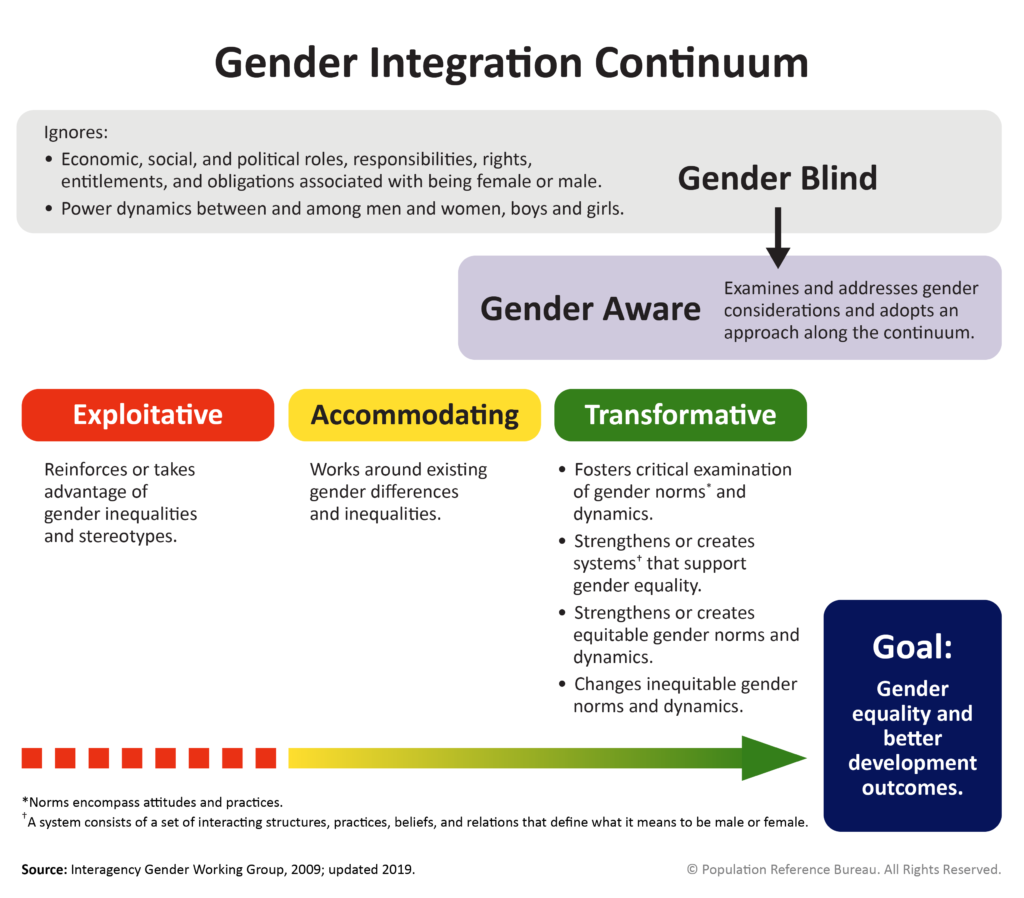On May 18, 2023, the Interagency Gender Working Group’s Male Engagement Task Force (METF) hosted a webinar, “DO’s and DON’Ts for Engaging Men and Boys in Health: A Learning and Exchange Session on How to Apply Relevant Tools and Frameworks,” for more than 175 attendees. METF co-chair Julie Pulerwitz (Population Council) opened the meeting with an overview of DO’s and DON’Ts for Engaging Men and Boys, a guidance document that describes best practices and lessons learned for engaging men and boys in health promotion and gender equity.
METF co-chair Myra Betron (Jhpiego) shared how the DO’s and DON’Ts were used to engage men in the CHAMPION Project (2009–2014), a USAID-funded HIV prevention program in Tanzania. In interactive breakout sessions, participants applied the guidance to case studies of health programs that have engaged men and boys, identifying successes and areas for improvement. The case studies represented a range of health areas, including family planning/reproductive health (FP/RH); HIV and AIDS; maternal, newborn, and child health (MNCH); and gender-based violence (GBV) prevention and response.
Participants also shared their experiences engaging men and boys in their own work, troubleshooting how to balance the goals of reaching men to address their own distinct health needs and facilitating gender equity within families and communities. METF co-chairs Dominick Shattuck (Johns Hopkins Center for Communication Programs, Breakthrough ACTION) and Peter Waiswa (Makerere University, Agency for All) facilitated the question-and-answer and discussion portions of the webinar.
The discussions emphasized the following key points:
- Formative research with both men and boys as well as women and girls is a key starting point to understanding norms of specific contexts and to informing intervention and messaging design;
- There is a critical need to balance efforts to engage men as partners in FP/RH, HIV and AIDS, and MNCH services, while still respecting women’s choice and agency; ongoing monitoring is required to achieve this balance;
- Interventions should work through a socio-ecological model to address not just individual-level barriers, but those posed by partners and family members and community and social norms, as well policy or legal barriers;
- Positive role modeling of men as supportive partners and agents of change (part of the conceptual framework upon which the DO’s and DON’Ts guidance is based) is an effective approach for positive transformation of gender norms and practices; and
- There is significant potential power in starting early in the life course to shape norms and behaviors.
Challenges and opportunities that emerged in the discussions included:
- The importance of understanding men’s unique needs and designing services and interventions to meet them;
- The challenge of meeting men where they are while still transforming harmful gender and social norms rather than emphasizing existing gender inequalities to achieve project objectives;
- The need for advocacy to strengthen policies and guidelines for engaging men;
- The opportunity to work with men across health areas to maximize positive outcomes; and
- The need to identify simple and scalable solutions to engage men, such as leveraging existing groups or structures that already work with men.
Attendees left the webinar with the knowledge to describe effective strategies for engaging men and boys in health promotion and gender equity.
Click on the links below to access the recordings and slides from the webinar and other related resources.
Webinar Recording (main room)
Female Genital Mutilation/Cutting Breakout Group
Campaign to Increase Contraceptive Use and Male Involvement in Zimbabwe Breakout Group
Working with Boys and Girls to Decrease Risk of HIV Infection Breakout Group
Access to Sexual Health Services for Key Populations Breakout Group
Engaging Men in Antenatal Care in sub-Saharan Africa Breakout Group
DO’s and DON’Ts for Engaging Men and Boys
(English, French, Portuguese, Spanish, Kiswahili)


